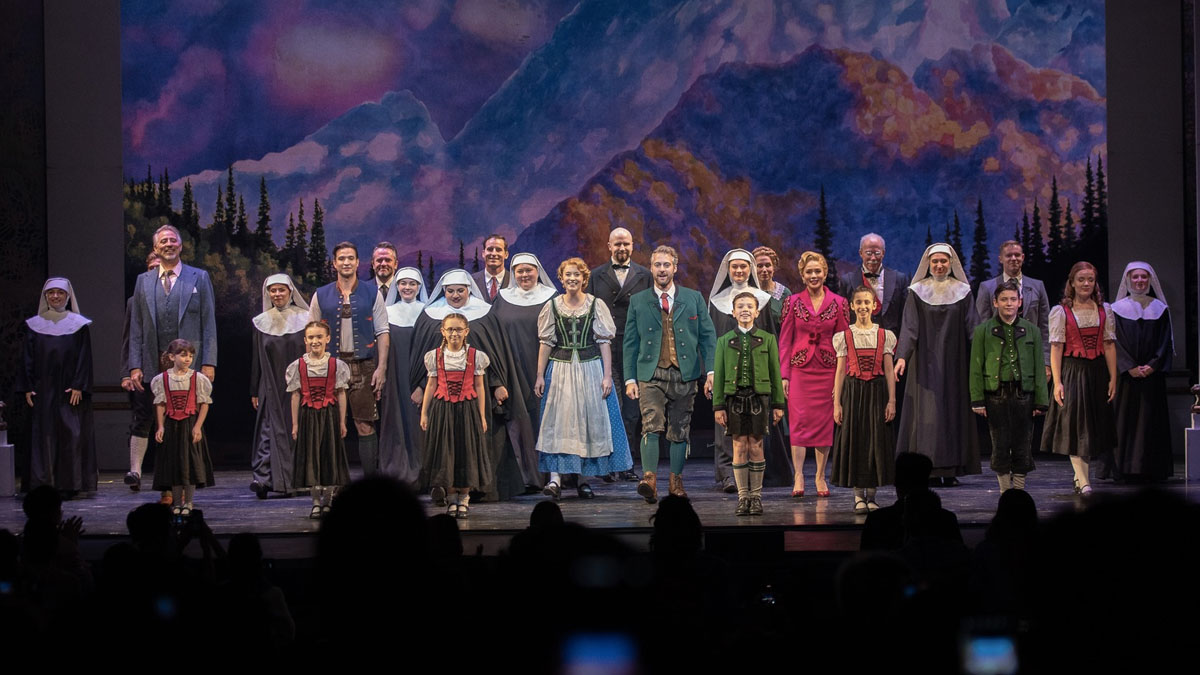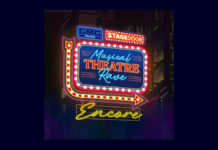Few musicals are as iconic and as treasured by the Filipino as The Rodgers and Hammerstein classic; The Sound of Music. And this is by no means an accident. The film adaptation of The Sound of Music starring the incomparable Julie Andrews is the first musical an entire generation of Filipinos grew up with, and it has served to be the gateway into the broader world of musical theatre and film that has achieved an unparalleled omnipresence during the holiday season, with its song “My Favorite Things” actually enshrined in the Great American Songbook as the quintessential consumerist anthem during Christmas.
But I digress.
The Sound of Music tells the story of Maria, a young postulant in the Nonnberg Abbey, who leaves to become a governess for the seven children of the decorated war-hero Captain Georg von Trapp, a widowed, naval officer just before World War II. Maria brings joy and music to the children’s lives, and eventually falls in love with the initially gruff, but charming Captain. However, their happiness is threatened by the growing Nazi influence in Austria and the Captain’s obligation to join the German Navy. With the help of the children and the local community, the family flees the country in the middle of a music festival, and starts a new life in Switzerland.
Brought to our shores by GMG Productions, in partnership with Broadway International Group and Broadway Asia, this production of The Sound of Music that is currently running onstage at the Samsung Performing Arts Theater in Circuit, Makati is a brilliant adaptation of the immortal R&H story. It is a lean and efficient production in that it accelerates the pace of the original material that has often been described as somewhat more deliberate than most modern musicals. While the material, its language, sensibilities, and music may be a little dated, but its message of kindness, sacrifice, and love for country are still very relevant to audiences.
The cast is led by Jill-Christine Wiley who plays Maria Rainer. Wiley is captivating in that her portrayal of Maria flies in the face of the traditional expectations of how the role was played. Her Maria discards the naïveté and virginal piety that the typical doe-eyed Maria has. She is very grounded, her movements less controlled, and her performance skews ever so slightly more into the chaotic character described in “How Do You Solve a Problem Like Maria?”. Wiley’s vocals are pristine and powerful; and while the natural inclination for actors who fill this particular role is to adopt an almost “bell-like” quality, Wiley’s Maria tempers and balances this with a strong and stable belt that allows her voice to soar and delight in her lower range in equal measure.
Other standouts from the cast include Trevor Martin playing the role of Captain Georg Von Trapp, whose warm baritone is a beautiful and rich callback to the days before male leads were written to be shriller than most leading ladies. Despite being the character that is supposed to exude strength, there is no shortage of moments in his portrayal of the hardened soldier that comes across as sensitive and poignant. The children were all very talented, precocious, and rounds out the pitch-perfect family. Markki Stroem and Karylle Tatlonghari turn in commendable performances as Rolf Gruber and Elsa Schraeder, respectively. Stroem cuts a gallant figure playing opposite Lauren O’Brien’s wide-eyed Liesl. Tatlonghari’s thoughtfully fleshed-out Elsa Schraeder comes across as a pragmatic realist, and complements Captain Von Trapp perfectly, with a strong vocal performance to match.
There was actually one small detail about the production that I noticed. Well, it’s not small in that it dominated the entire aesthetic of the show. Keep an eye out for the treatment of the set design and how they prominently feature Austrian Lace. One of the main cultural significance of Austrian lace is its association with traditional Austrian dress. For centuries, Austrian women have worn traditional dresses, which often feature intricate lace designs. These dresses are an important part of Austria’s cultural identity, and they are still worn on special occasions and festivals. Austrian lace is also used to make other traditional clothing items, such as head coverings and aprons. You could see this motif carried over the scenery especially within the walls of the Von Trapp family mansion as an echo of Captain Von Trapp’s love for his country and identity, and you see less and less of it as the story progresses, as Austria is slowly becoming further and further assimilated by Nazi Germany. It is a subtle but powerful visual representation of the plot as it moves through space and time.
At the show’s pivotal moment, as Captain Von Trapp looks at the looming symbols of the Third Reich, guitar in hand, the formerly larger-than-life character looks piteously small. That visual struck the author as the true message of The Sound Of Music: that music as one of the tangible manifestations of one’s identity and culture, can be used to fight back against oppression and doubt.
The Sound of Music is iconic and timeless for this reason. Music is universal, and it can move mountains.
Click here for more stories like this. You may also follow and subscribe to our social media accounts: Facebook, YouTube, Instagram, TikTok, Twitter, and Kumu.






















